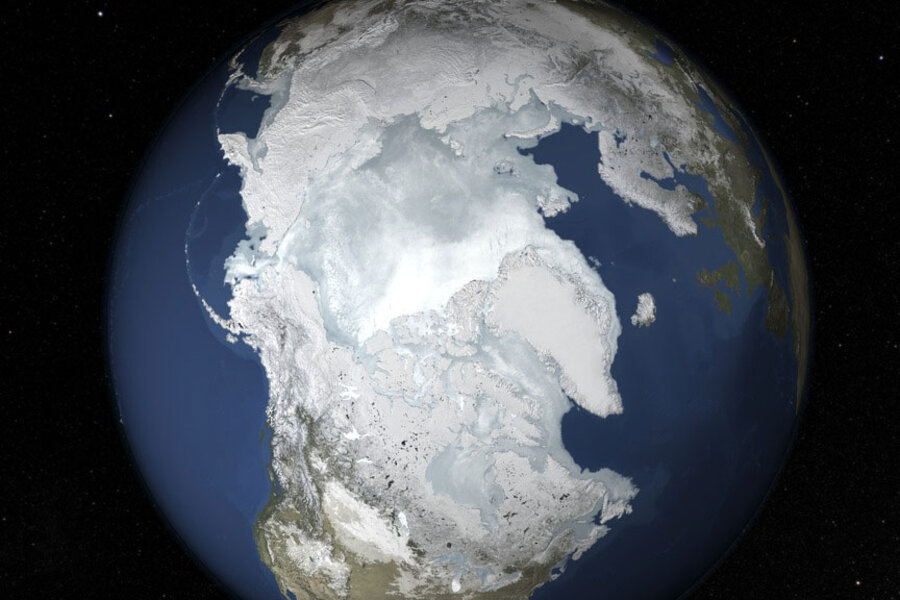Why record low Arctic sea ice only tells half the story
Loading...
A series of new studies from scientists around the world have revealed just how threatened the Earth's polar regions are to warming ocean waters.
Over the past week, new studies have shown that ice melt in the Arctic and Antarctica is proceeding at a record pace, with potentially disastrous consequences for global sea level rise and its attendant threats, which could include stronger storm surges and extreme weather events around the world.
While headlines have focused on the Arctic sea ice reaching a record low this winter, of the two polar regions, climate scientists are most concerned about melting ice sheets in Antarctica. Unlike sea ice in the Arctic – which melts and freezes seasonally, having a minor effect on global sea levels – melting ice sheets in Antarctica have the potential to melt enough fresh water to raise global sea levels by more than 10 feet.
A study released on Tuesday has challenged a central assumption about Antarctic ice sheet melt: Namely, whether the famously fragile western edge of the continent is in fact the most most vulnerable to warming waters. The new study, published by the International Collaboration for Exploration of the Cryosphere Through Aerogeophysical Profiling (ICECAP) research team in the journal Nature Geoscience, contends that the continent's eastern ice sheets are actually in much more danger than previously believed.
Antarctic researchers have long been aware that warm-water currents in the region are eroding the continent's western ice sheets, with the Southern Ocean's high salinity allowing warm water to sink uncharacteristically below cold water. According to the ICECAP team, those same warm-water currents are also gaining access under the east side of the Totten Glacier through two "gateways" into a large cavity in the ice shelf.
The Totten Glacier covers an area of 90 miles by 22 miles, but more important is the "catchment" of inland ice the frozen glacier holds back from the surrounding ocean. That catchment is estimated at 538,000 square kilometers, or three-quarters the size of Texas. There is enough ice in the catchment area behind the glacier to raise sea levels by 11 feet, according to the ICECAP team.
"And that's a conservative lower limit," said Jamin Greenbaum, an ICECAP geophysicist and lead author of the study, according to The Atlantic.
"It would take [melting] all of the glaciers in West Antarctica that drain its interior basin to raise sea levels by that much," Greenbaum added.
Ice sheet melt in West Antarctica, in contrast, could raise sea levels four feet – with NASA recently declaring that the eventual loss of a major section of West Antarctica's ice sheet "appears unstoppable."
The ripple effects of Antarctic ice melt are hard for scientists to predict, but their overall concerns are that the potential contributions of the ice melt to global sea level rise could severely exacerbate storm surges and extreme weather events around the world.
The ICECAP team have said they will now use their new findings to develop a better predictive model for mapping out the future behavior of the glacier.
Meanwhile, a separate report from the National Snow & Ice Data Center found that this year's Arctic sea ice hit a record low this winter.
According to the report, Arctic sea ice covered 5.61 million square miles at its maximum extent this year – the lowest since satellite record keeping began in 1979. The report also found that Arctic sea ice reached this maximum extent earlier than expected, on Feb. 25, 15 days earlier than the March 12 average calculated from 1981 to 2010. This year's ice cover was also 50,200 square miles less than the previous low-record set in 2011.
Another recent study, published last month, found that Arctic sea ice had thinned by 65 percent between 1975 and 2012.
NSIDC scientists wrote in the report that further increases in sea ice cover "are still possible" over the next two to three weeks, but added that "it now appears unlikely that there could be sufficient growth to surpass the extent reached on February 25."






